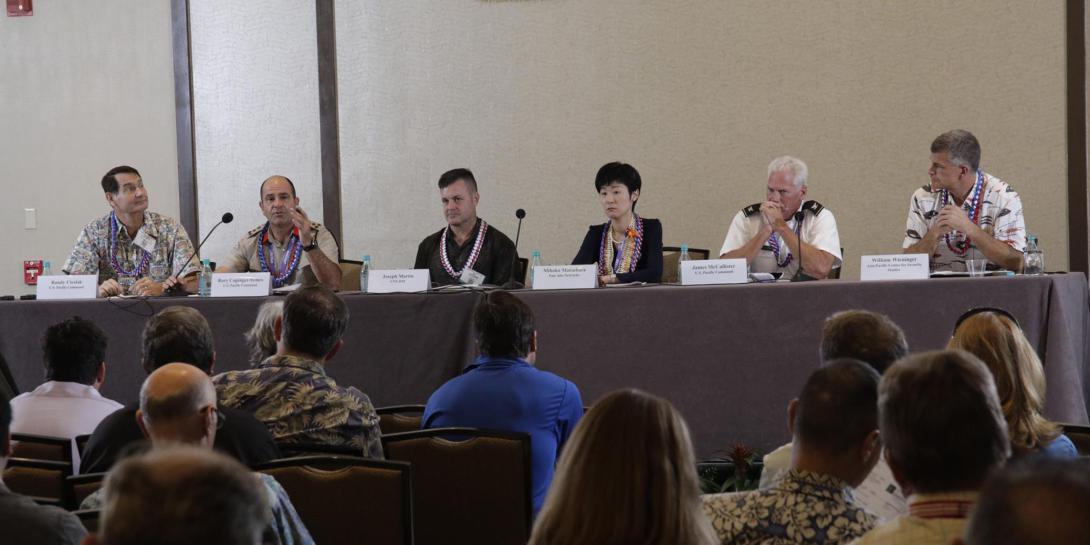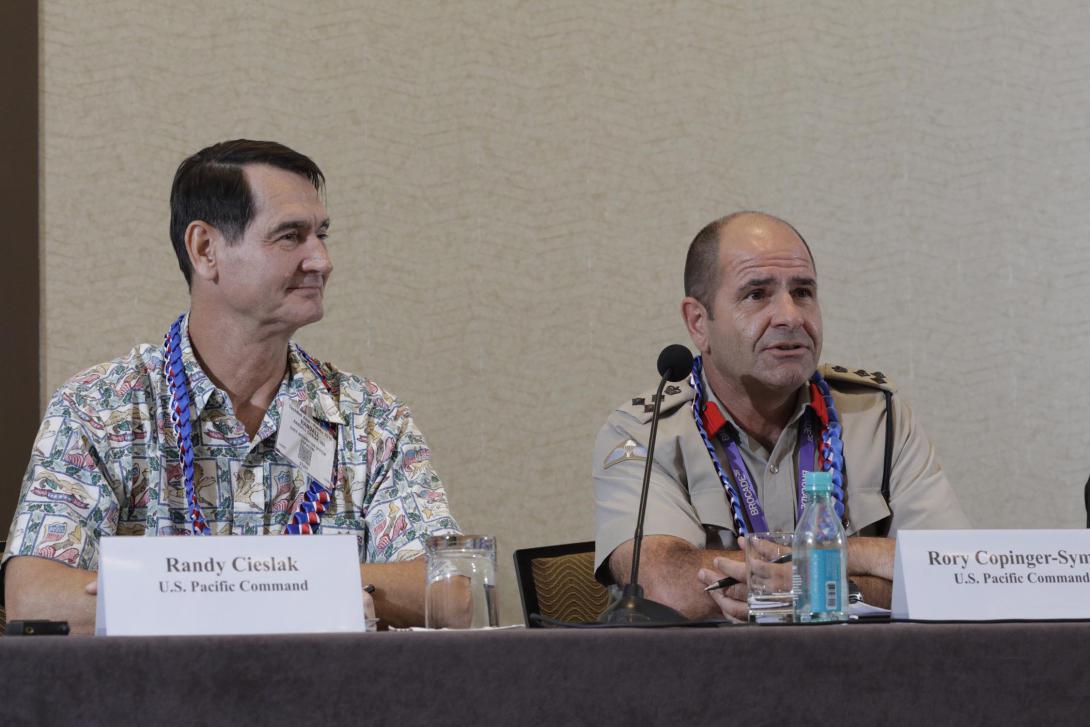Building Trust in the Cyber Era
Trust—or a lack thereof—is one of the biggest impediments to information sharing among coalitions and partner nations, according to a panel of experts speaking at the AFCEA TechNet Asia-Pacific conference in Honolulu.
Randy Cieslak, chief information officer for the U.S. Pacific Command (PACOM), led the panel. He described cyber as a two-edged sword available to both good guys and bad. Cyber enables the Internet of Things and knowledge but also contributes to a loss of privacy, trust, data ownership and intellectual property. “We have users using the Internet for their information applications with the primary purpose of sharing with our partners, but we have these intruders who are sneaking in there to use the Internet for their own purposes,” Cieslak said. “If you emphasize protection, it makes it frustrating for users because of all the safeguards and controls. Interoperability becomes more difficult.”
Cieslak, @PacificCommand, our goal is to make cyber harder to exploit while making it easier to use#AFCEATechNet
— George Seffers (@gseffers) November 16, 2016
The need to protect information also makes it difficult to take advantage of technological advances because “we don’t trust those advances,” which “results in slower development,” he indicated.
“It’s a balance of where to apply resources. Do you apply them to reducing risk or increasing your capability?” Cieslak asked.
Brig. Rory Copinger-Symes, United Kingdom Royal Marines, deputy director for security cooperation, PACOM, told the audience that both international security and prosperity are dependent on digital communications. Even kids now communicate globally, he pointed out.
“What we have to do is work together. We have to share our experience and our knowledge,” the brigadier declared. “The reason I say we need to share and to work together is to build trust. Trust to me is the most fundamental piece we need to work on. Unless we can trust each other with shared information, shared tools, we’re never going to operate in coalition terms.”
Brig. Copinger-Symes, @PacificCommand, have to trust each other with shared information, tools or never operate as coalition#AFCEATechNet
— George Seffers (@gseffers) November 16, 2016
He touted the need for doctrine, training and education, saying, “It’s only through doing that you build up the trust and understanding.”
Brig. Copinger-Symes also called for an entirely new headquarters organization in the cyber era. “Most of our headquarters, certainly in the Western environment, are designed around an old Prussian model. I’m talking about J-6, J-4, J-5. That was designed by the Prussians years ago, so why don’t we structure correctly now that we are in this new domain? Because I would argue we do need to think very carefully about how we move information internally in headquarters because we are operating in this cyberspace now,” he said.
Joseph Martin, director, Department of Defense Center for Excellence in Disaster Management and Humanitarian Assistance , also said his position includes information sharing challenges. “The entire U.S. Department of Defense response systems, our command and control systems, our communication systems, are designed around not sharing data and protecting that data from others,” he said.
He cited the recent earthquake in New Zealand, and said he had asked a friend if the U.S. Air Force could fly over and take some pictures to aid the humanitarian assistance. He had asked the day before speaking at TechNet Asia-Pacific how long it would take to declassify the data so that others could use it, but he still had not received an answer, he reported. “The same images that would feed the U.S. response process have massive utility outside of just the U.S. structure,” he offered.
Martin, CFE-DE, due to weird rules I don't understand, data becomes classified#AFCEATechNet
— George Seffers (@gseffers) November 16, 2016
Information often can serve dual purposes, Martin pointed out. He reported that a disaster relief handbook for Sri Lanka could also be useful to warring factions in that country, for example.
William Wieninger, associate professor at the Asia Pacific Center for Security Studies, said the United States often looks at building more secure systems, but that it’s really all about the people using the systems. “As soon as people start using them, they will become insecure. But the key is to get those people in a situation where they feel a sufficient level of trust to share that information,” he said. “A requirement for that is person to person interaction.”
Wieninger, @APCSS, once you have trust, can use cyberspace very effectively to share info#AFCEATechNet
— George Seffers (@gseffers) November 16, 2016
He stated that even terrorists rely on the Internet for propaganda and personal interactions to build the trust necessary for recruitment.
“Once you have trust, you can use cyberspace to very effectively share information,” Wieninger concluded.






Comments